Set 1 of My
Maple Tree and Maple Sugaring Favorite Photographs
Bob Jensen at
Trinity University
We live in
Sugar Hill, New Hampshire which got its name for the tapping of maple trees to
get
maple syrup, maple sugar, maple flavorings, and sweet maple paste.
We have upwards of 50 maple trees, but Erika and I really only have seven that are
the very large and very old maple trees
This is one of the oldest of our big maple trees that's located in our
wildflower field south of the cottage
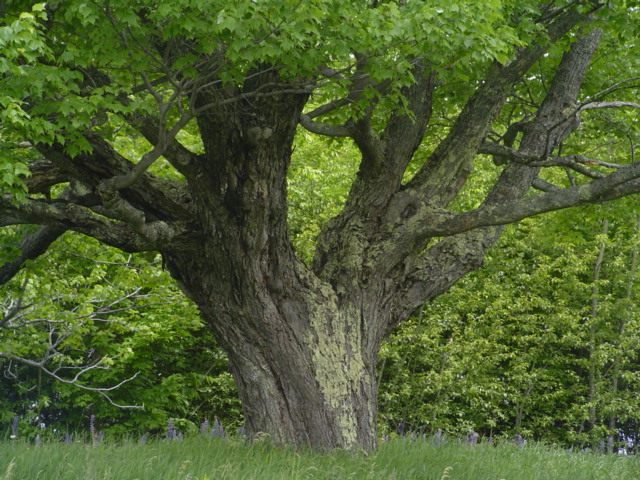
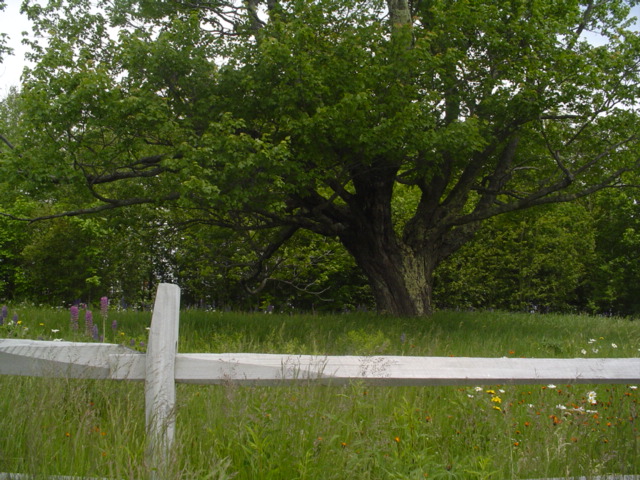
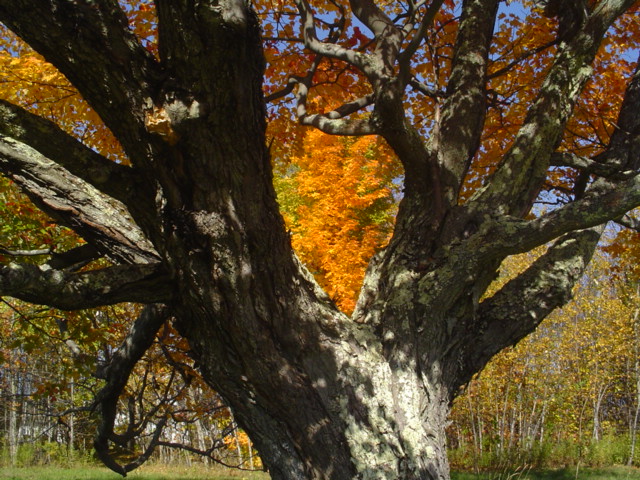
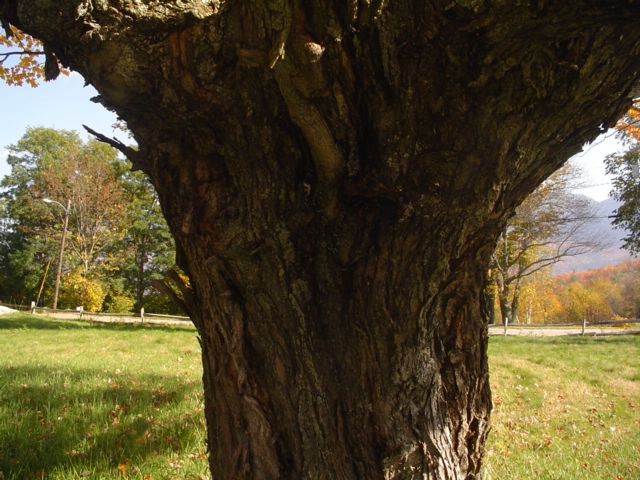
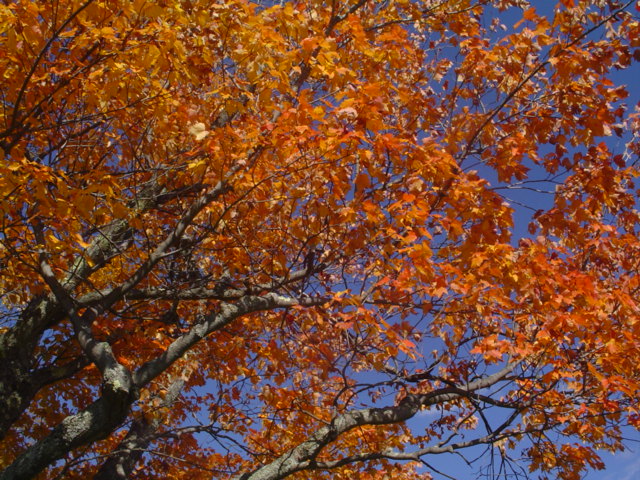
Very old maple trees are like old
people. They tend to become fragile and diseased.
The above tree lost a very big limb in the Summer of 2012.
It was not due to wind or heavy ice, both of which it endured for nearly 200
years.
The limb simply fell down on a calm day summer day when Erika and I were
visiting our children in Maine.
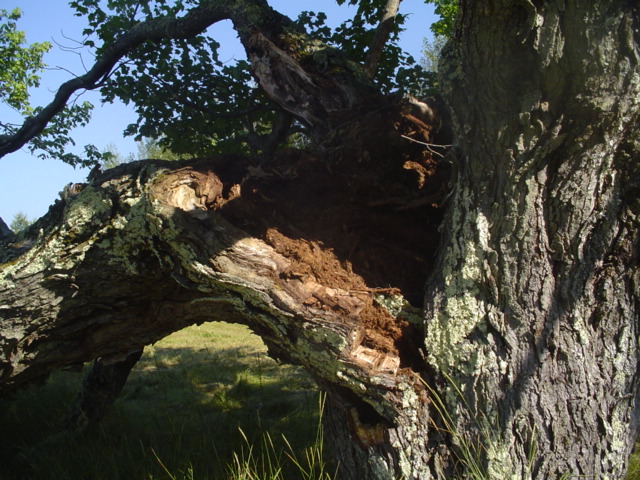
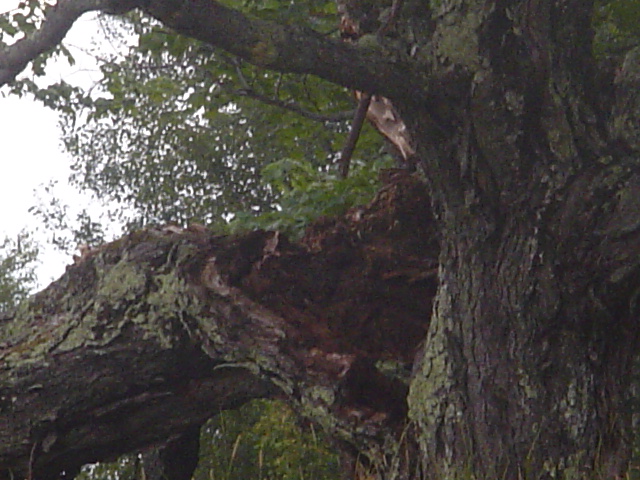

The photograph below shows the broken limb plus our barn in the background
The old tree lives on but Ice and wind bring it down much sooner now that it is
wounded.

The Sunset Hill House Hotel is opposite our wildflower field
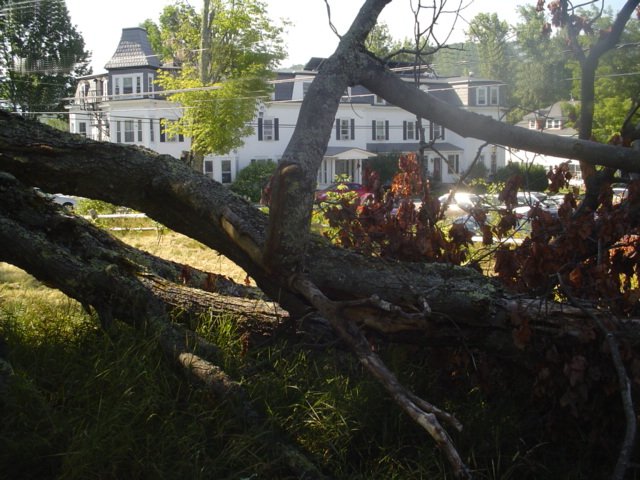
This is another of the three big and old maple trees in our wildflower field
Our barn was once a power house that generated electricity for a resort that
once stood on our land
I added a garage for my tractor and equipment
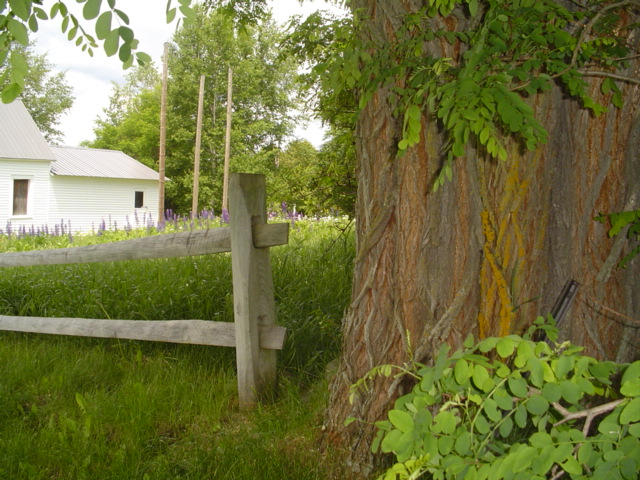

We have other large and old
maple trees that are still hanging on in the winter winds and the snow and ice.
This is the one closest to the cottage that is beside an outbuilding we call
the studio
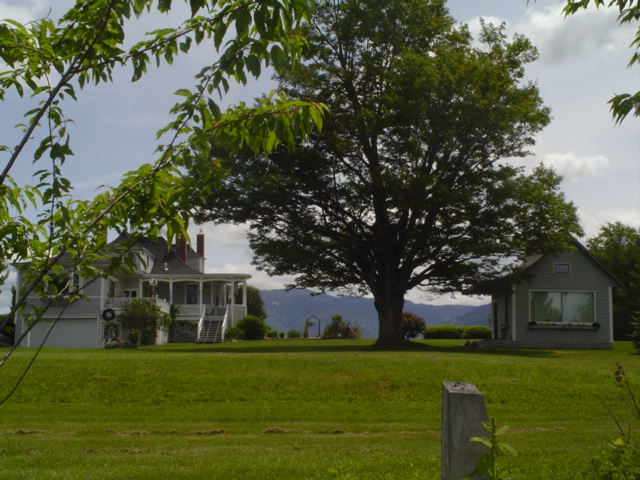

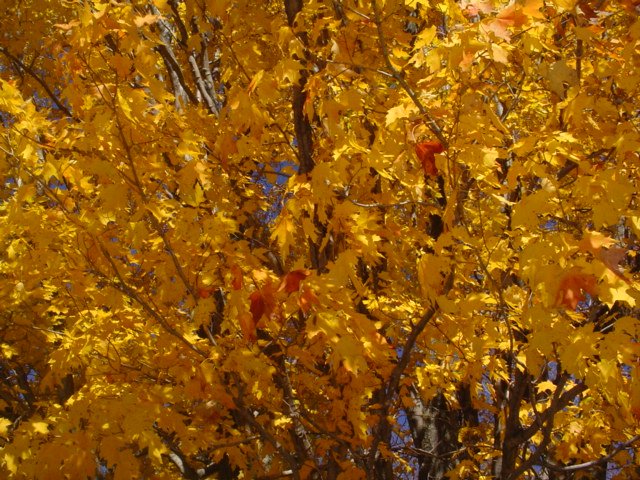
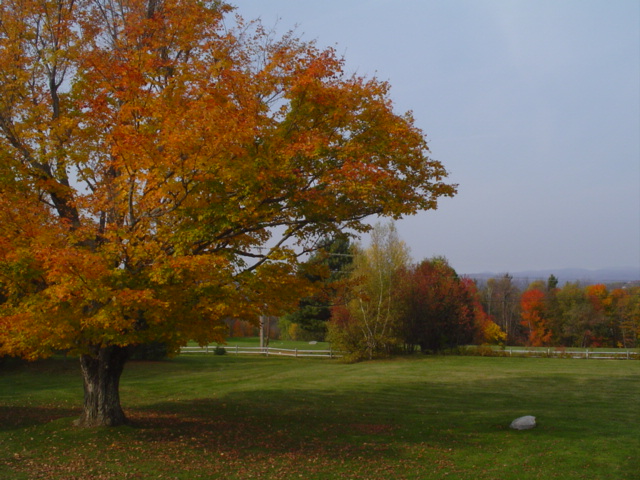
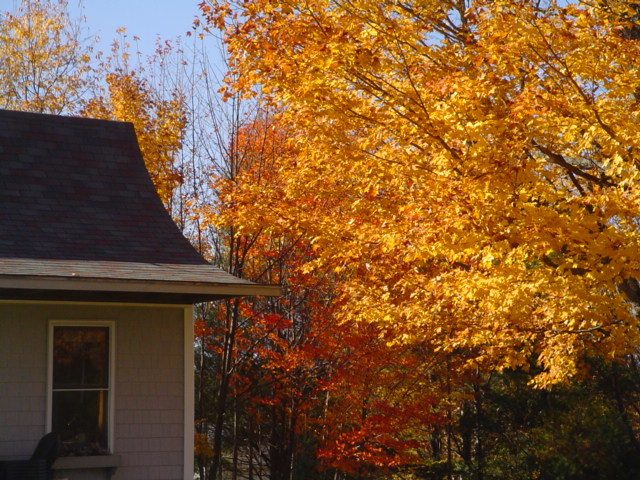

These are two large maples
southeast of the cottage
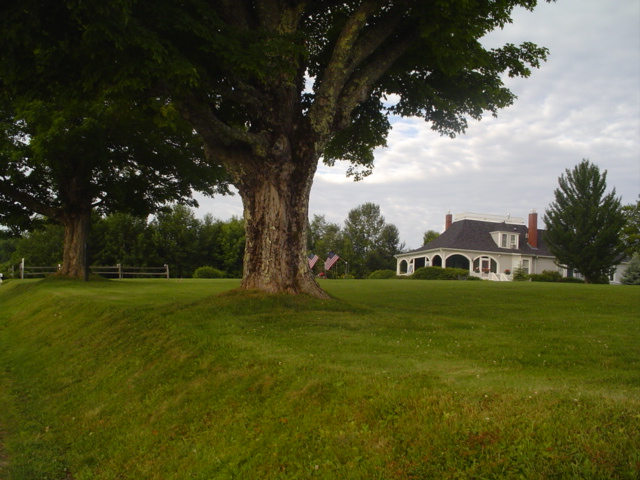
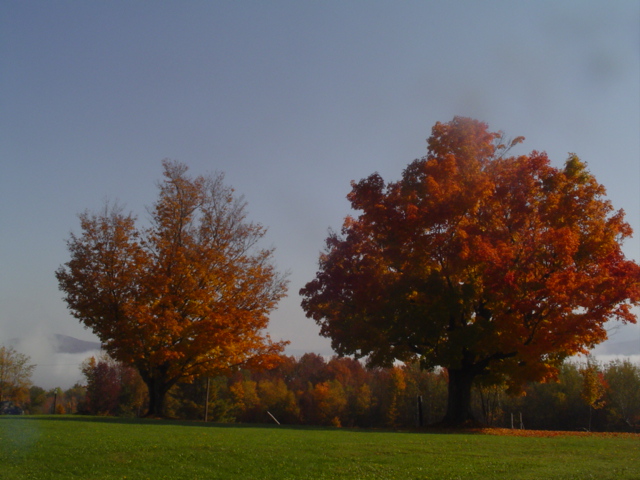

The maple trees shed deep blankets
of leaves upon the lawn
This year I purchased a sweeper that works great behind my tractor
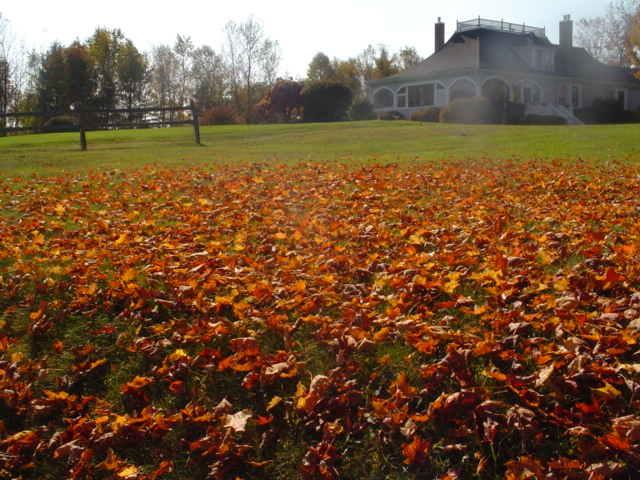
This is how those two maple trees
frame Mt. Washington as seen from our driveway in late October
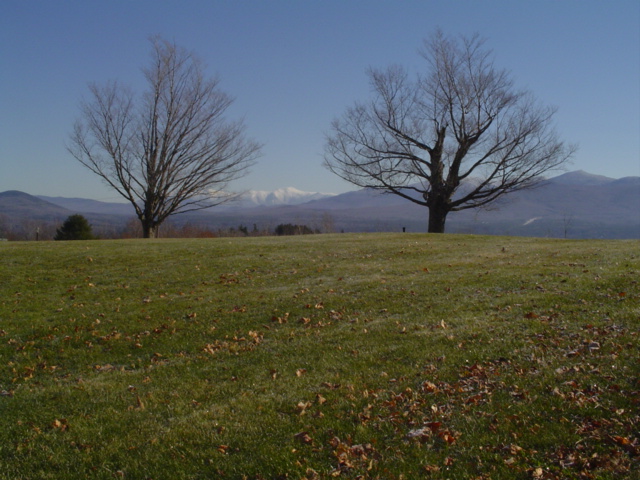

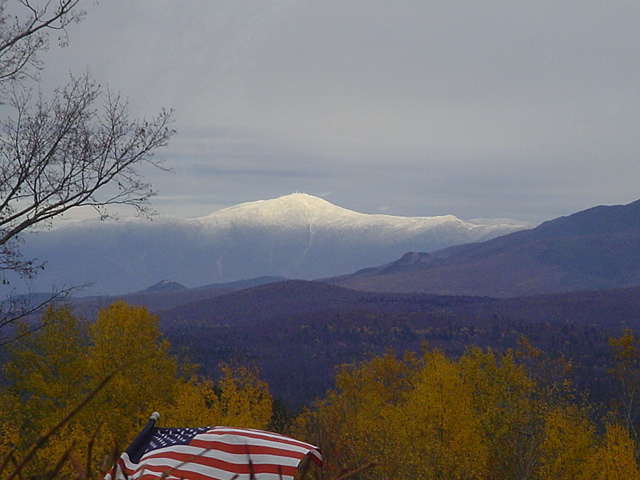
This is me in front of a big tree in front of Stephen King's mansion in Bangor

Below is the biggest of our maple
trees (over 14 feet in circumference)
It's directly north of our driveway parking area
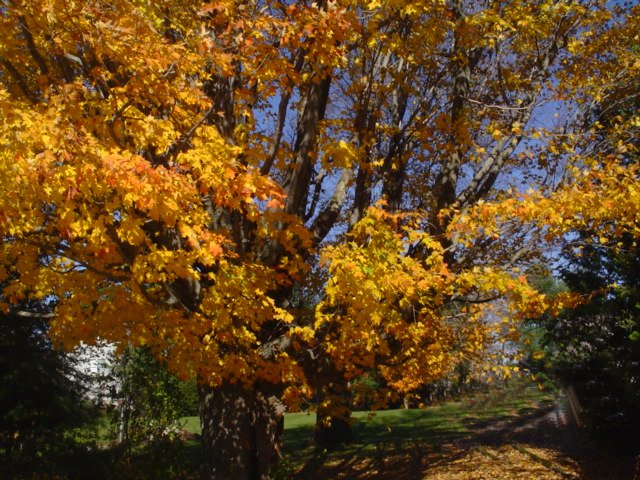
This big maple towers above the cedars that line
the driveway
Several years ago young deer ate away the bottoms of the cedar trees
These trees are still recovering
Now I put out snow stakes wrapped with heavy fish line around these cedars in
the winter
That seems to keep the deer from turning my cedar trees into lollypops

This is a younger maple on the north
side of the cottage
It has tiny maple leaves compared with the other maple trees in our acreage
The red impatience were still in bloom because October was quite warm in these
mountains
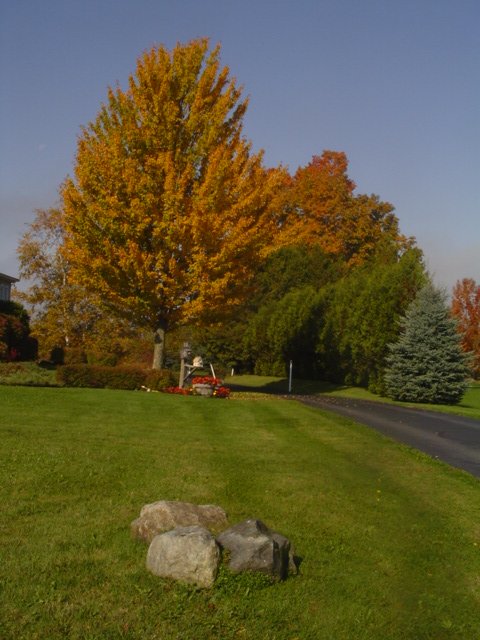

This big maple tree shown below
split down the middle three years ago and had to be cut up for firewood
The cement strips are what remains of an old shuffle board court of the big
hotel that once stood on this land

Out back on the golf course a maple tree serves as a sign post to mark the cross country ski trails
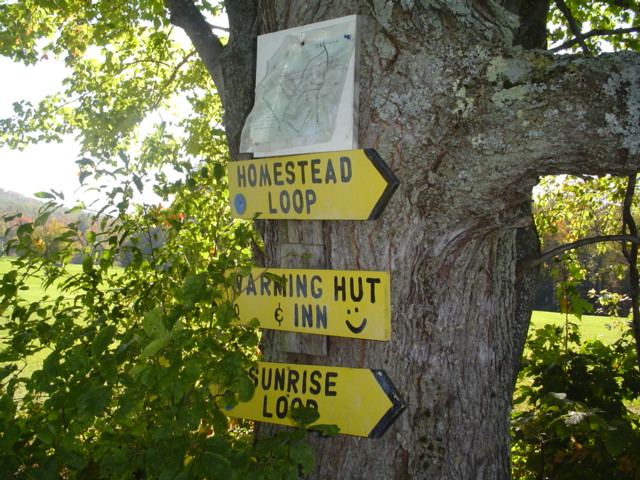
Usually in March in Sugar Hill
sugaring taps are pounded into the maple trees for the sap that will be boiled
down into syrup
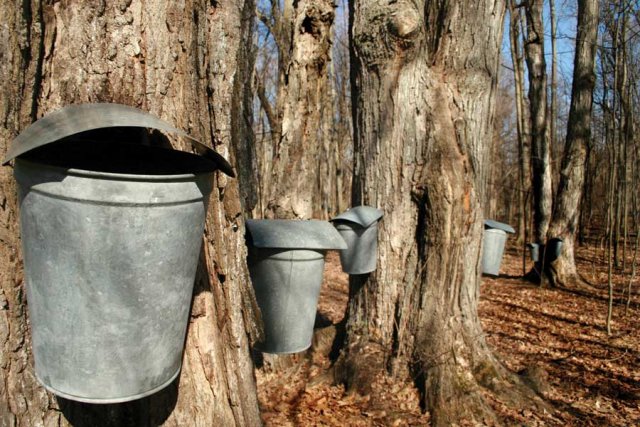
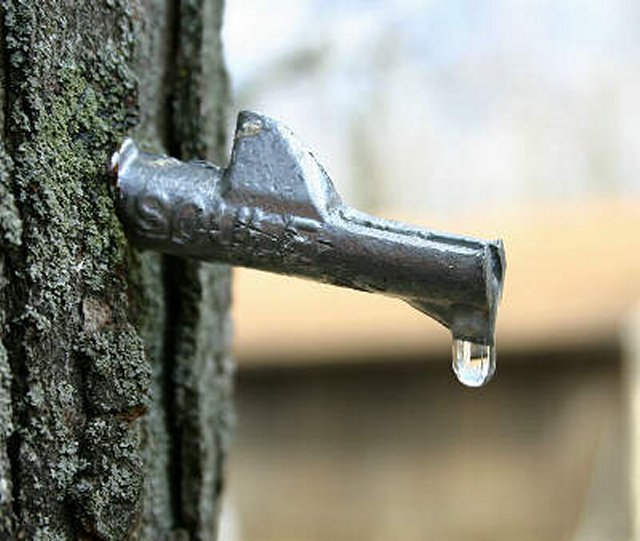
Three years ago a neighbor a half
mile down Sunset Hill Road lost this big maple tree
This illustrates how many of these historic old trees are hollowed out in the
middle
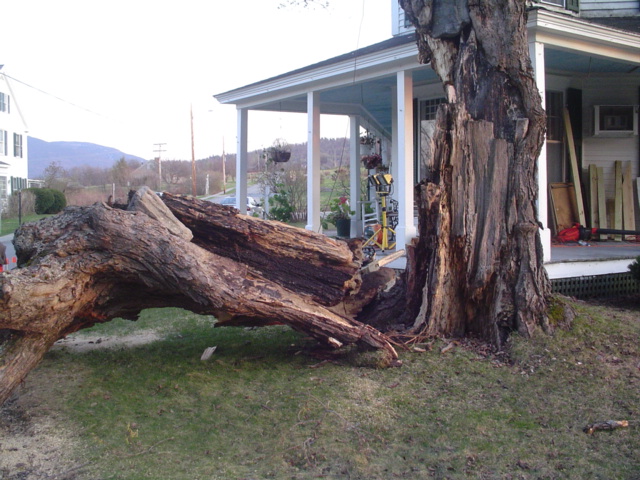
I captured the pictures below from our living room in the autumn of our lives

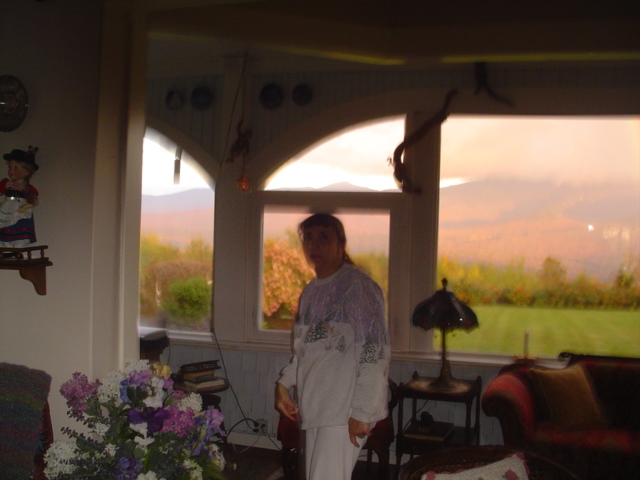
Maple Syrup
---
http://en.wikipedia.org/wiki/Maple_syrup
Maple syrup is a
syrup usually
made from the
xylem
sap of
sugar maple,
red maple, or
black maple trees, although it can also be made from other
maple
species. In cold climates, these trees store starch in their trunks and
roots before the winter; the starch is then converted to sugar that rises in
the sap in the spring. Maple trees can be tapped by boring holes into their
trunks and collecting the exuded sap. The sap is processed by heating to
evaporate much of the water, leaving the concentrated syrup.
Maple syrup was first collected and used by the indigenous peoples of
North America. The practice was adopted by European settlers, who gradually
improved production methods. Technological improvements in the 1970s further
refined syrup processing. The
Canadian
province of
Quebec is by far the largest producer, responsible for about
three-quarters of the world's output; Canadian exports of maple syrup exceed
C$145
million (approximately
US$141 million) per year.
Vermont
is the largest producer in the United States, generating about 5.5 percent
of the global supply.
Maple syrup is graded according to the Canada, United States, or Vermont
scales based on its density and translucency.
Sucrose
is the most prevalent sugar in maple syrup. In Canada, syrups must be at
least 66 percent sugar and be made exclusively from maple sap[1]
to qualify as maple syrup. In the United States, a syrup must be made almost
entirely from maple sap to be labelled as "maple".
Maple syrup is often eaten with
pancakes,
waffles,
French toast, or
oatmeal
and
porridge. It is also used as an ingredient in
baking, and
as a sweetener or flavouring agent. Culinary experts have praised its unique
flavour, although the chemistry responsible is not fully understood.
Maple Tree
---
http://en.wikipedia.org/wiki/Maple_tree
Maples are variously classified in a family of their own, the
Aceraceae,
or together with the
Hippocastanaceae included in the family
Sapindaceae. Modern classifications, including the
Angiosperm Phylogeny Group system, favour inclusion in Sapindaceae. The
type species of the genus is
Acer pseudoplatanus (Sycamore maple).
There are approximately 128
species,
most of which are native to
Asia,
with a number also appearing in
Europe,
northern Africa,
and
North America. Only one species, the poorly studied
Acer laurinum, is native to the Southern Hemisphere.
Fifty-four species of maples meet the
International Union for Conservation of Nature criteria for being under
threat of extinction in their native habitat.
The word Acer derives from a
Latin word meaning "sharp" (compare "acerbic"), referring to the
characteristic points on
maple
leaves. It was first applied to the genus by the
French botanist
Joseph Pitton de Tournefort in 1700. The earliest known fossil maple is
Acer alaskense, from the
Latest Paleocene of Alaska.
From the Scout Report on April 5, 2013
Amidst a bucolic New England backdrop, the maple syrup industry is
going high-tech
High-Tech Means of Production Belies the Nostalgic Image of Maple Syrup
http://www.nytimes.com/2013/03/31/us/maple-syrup-takes-turn-toward-technology.html
Birch syrup explored as add-on to maple industry
http://online.wsj.com/article/AP38cd57f41f0646caad366c5ec16b8201.html
Maple-syrup making way of life for Salem family
http://www.vindy.com/news/2013/apr/01/hidden-farm-yields-masterful-syrup-makin/
Produces hope for successful maple syrup season
http://lacrossetribune.com/news/local/producers-hope-for-successful-maple-syrup-season/article_91ca78d0-98e7-11e2-9322-001a4bcf887a.html
Maple Research Website
http://researchguides.uvm.edu/maple/
Maple Syrup
http://www.poetryfoundation.org/poem/171760
More of Bob Jensen's Pictures and
Stories
http://www.trinity.edu/rjensen/Pictures.htm
Blogs of White
Mountain Hikers (many great photographs) ---
http://www.blogger.com/profile/02242409292439585691
.
White
Mountain News ---
http://www.whitemtnews.com/
On May 14,
2006 I retired from
Trinity University after a long and
wonderful career as an accounting professor in four universities. I was
generously granted "Emeritus" status by the Trustees of Trinity University. My
wife and I now live in a cottage in the White Mountains of New Hampshire ---
http://www.trinity.edu/rjensen/NHcottage/NHcottage.htm
Bob
Jensen's Blogs ---
http://www.trinity.edu/rjensen/JensenBlogs.htm
Current and past editions of my newsletter called New
Bookmarks ---
http://www.trinity.edu/rjensen/bookurl.htm
Current and past editions of my newsletter called
Tidbits ---
http://www.trinity.edu/rjensen/TidbitsDirectory.htm
Current and past editions of my newsletter called
Fraud Updates ---
http://www.trinity.edu/rjensen/FraudUpdates.htm
Bob Jensen's past presentations and lectures
---
http://www.trinity.edu/rjensen/resume.htm#Presentations
Our
address is 190 Sunset Hill Road, Sugar Hill, New Hampshire
Our cottage was known as the Brayton Cottage in the early 1900s
Sunset Hill is a ridge overlooking with
New Hampshire's White Mountains to the East
and Vermont's
Green Mountains to the West
New Hampshire Historical Society
---
http://www.nhhistory.org
Clement Moran Photography
Collection (antique New Hampshire photographs) ---
Click Here
http://www.library.unh.edu/digital/islandora/solr/search/moran/1/category%3APhotographs~slsh~Clement%5C%20Moran%5C%20Collection%2A~/dismax
Bob Jensen's Threads ---
http://www.trinity.edu/rjensen/threads.htm
Bob Jensen's Home Page ---
http://www.trinity.edu/rjensen/












